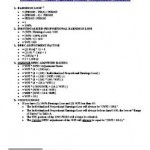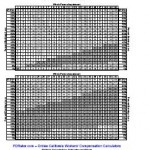Ogilvie: You’re working too hard

If you’re using my Ogilvie calculator for situations involving a 100% earnings loss, you’re working too hard. ((Photo courtesy of lincolnblues))
If you have 100% earnings loss and WPI less than 45, the Ogilvie adjustment formula will always result in WPI + 18.
Not to worry. I can make Ogilvie even easier:
- [download id=”1″].
- [download id=”2″]!
The Ogilvie mathematical proof has been available for several weeks for peer review. I’ve only received positive feedback. ((An anonymous source from the DWC actually called it “cool”!)) The above Ogilvie Adjustment Chart has been testing by myself and other workers’ compensation attorneys, but like everything else on this site is provided subject to all legal disclaimers.
Here’s a peek at what they look like:








